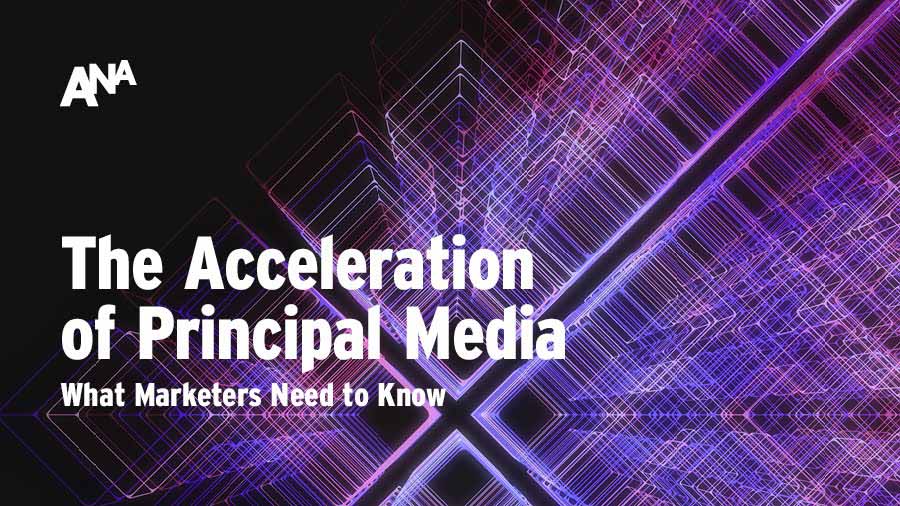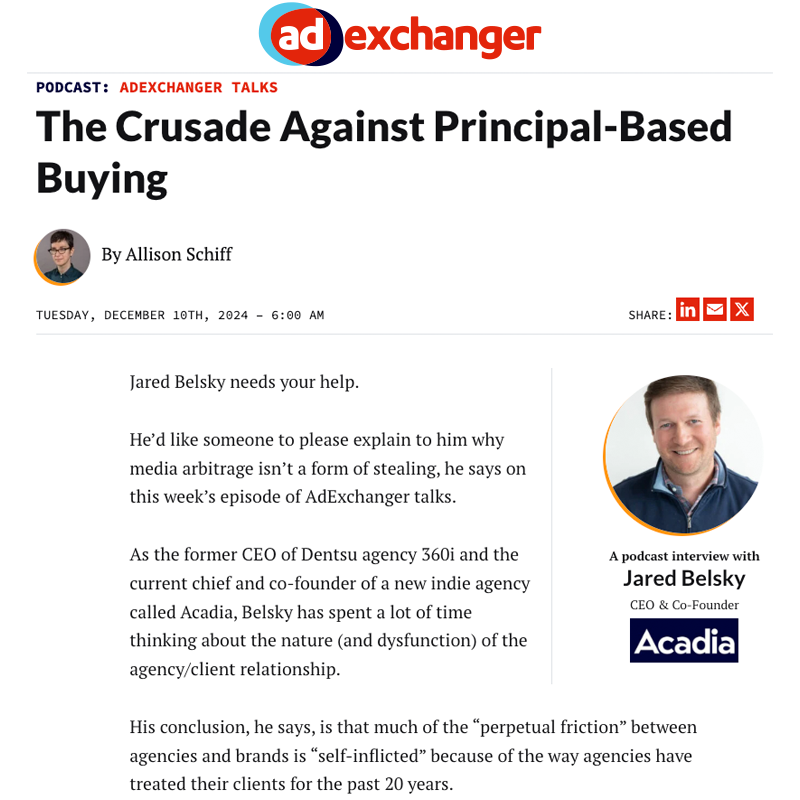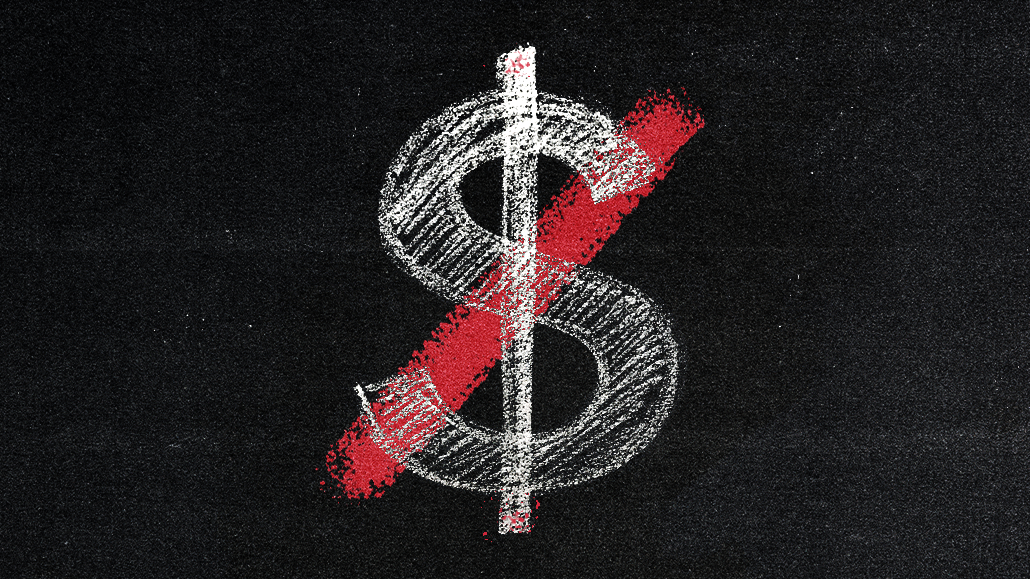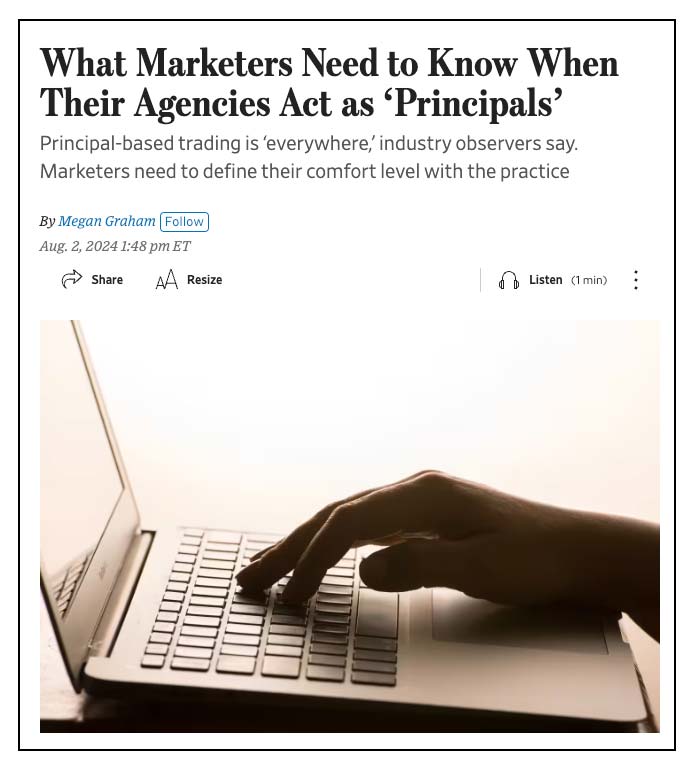say no to
principal media buying
Brands should not engage in principal media buying without knowing all the facts
It’s time to confront the reality of principal media buying and its impact on your brand.
The practice of principal media buying has repeatedly prioritized one thing … profits. Too often, brands are in the dark about whether the media they’re paying for is best for their business or simply the agency's bottom line.
Principal buying causes systemic problems. On one level, the "break-out" or niche content from smaller publishers, where brands can find their customers, gets weeded out. On another level, pressure is placed on junior media buyers to steward money where profit is prioritized. They stop seeking and finding discrete media sources.
Technology won't reverse this quiet drain on brand performance. We simply need to stand up together and say enough is enough. Marketers need to ask more of their teams and partners. Demand to be shown that the media strategy aligns with your business goals, not just the agency’s need for margin.
Agencies need to stop sneaking in the back door with margin fixes and take the compensation issue head-on with clients.
After all, clients are already paying a negotiated "fee" for our effort and time. Hidden fees aren't part of the bargain.
Jared Belsky, CEO & Co-Founder Acadia






